
8 Best Pet Snakes for Beginners (Plus Care Tips)
Now that you know what to consider, let’s dive into the top beginner-friendly snakes that offer a great combination of ease, temperament and low maintenance.
1. Corn Snake (Pantherophis guttatus)
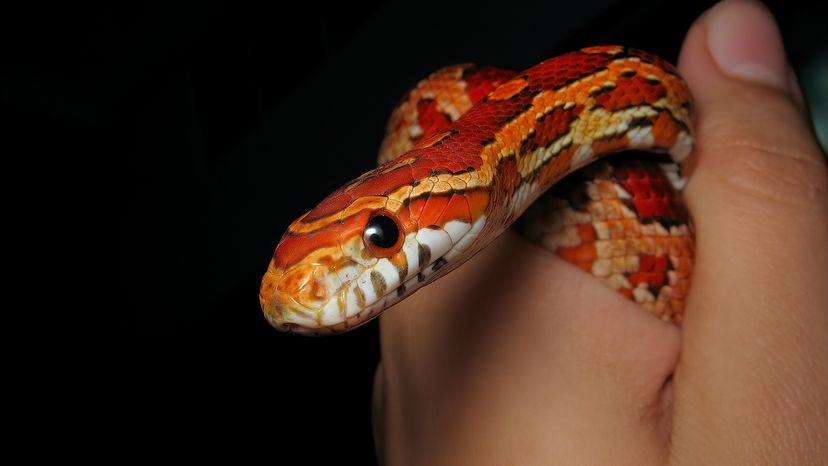
Joao Paulo Burini / Getty Images
The corn snake remains a top choice for beginners. Growing between 2 and 6 feet (0.61 and 1.82 meters), these snakes are known for their vibrant colors and calm temperaments.
Despite their name, corn snakes don’t eat corn; they allegedly got the name from being found in cornfields, where they hunt rodents (hence their categorization as rat snakes). They’re excellent escape artists, so make sure to lock up their enclosure tightly.
These nonvenomous constrictors thrive on a diet of frozen-then-thawed mice, and their habitat needs are simple, with a warm side and a cool side. They’re also very easy to handle, making them perfect for first-time snake owners who are a little nervous about interacting with them.
2. Ball Python (Python regius)
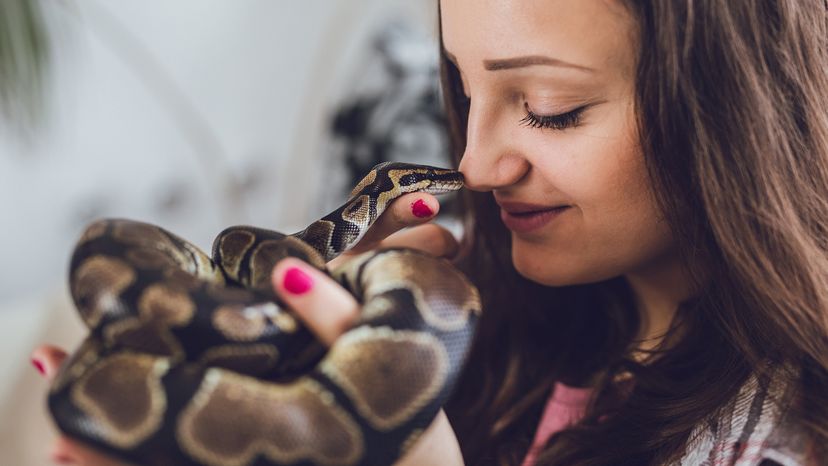
urbazon / Getty Images
The ball python is a popular choice for beginners due to its gentle nature. Adult ball pythons typically grow to 3 to 5 feet (0.9 to 1.5 meters) in length, with some individuals reaching up to 6 feet (1.8 meters).
When threatened, they curl up into a tight ball, which is how they got their name. Their wide range of color morphs also adds to their appeal, making them a favorite among snake enthusiasts.
While these snakes are great for beginners due to their calm nature, they can be a bit high-maintenance when it comes to their environment. They need specific temperature and humidity levels and can be picky eaters, sometimes refusing food for weeks.
Proper care with their enclosure and feeding is essential, making them more demanding than some other beginner snakes like corn snakes.
3. California King Snake (Lampropeltis californiae)

harpazo_hope / Getty Images
The California king snake is a striking black-and-white banded species, typically growing to 3 to 4 feet (0.9 to 1.2 meters) in length. Known for their hardiness and adaptability, they make perfect pet snakes for beginners.
However, they like to be the “king” (or “queen”) of their space, so it’s best to house them alone, as they may attempt to dominate or even eat other snakes.
Their curious and active nature makes them fun to watch, and they easily feed on frozen-then-thawed rodents. With their bold patterns and confident demeanor, California king snakes are a great choice for those seeking lively and engaging pet reptiles.
4. Milk Snake (Lampropeltis triangulum)
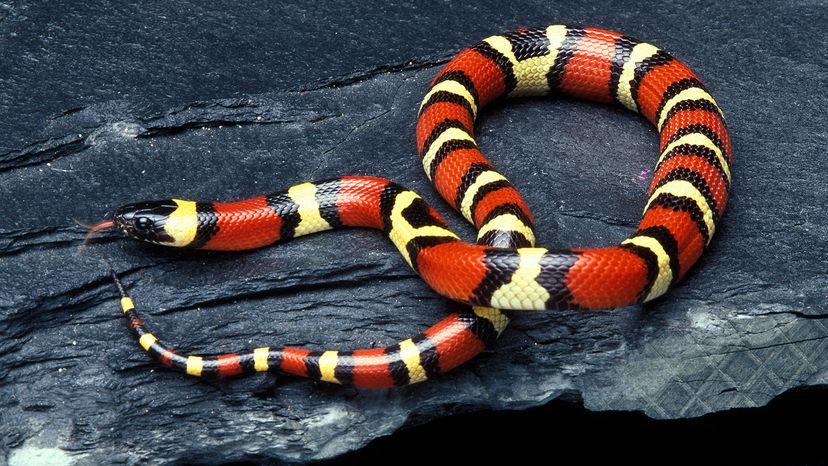
Simon Murrell / Getty Images/Image Source
Milk snakes are a visually striking species with their vibrant red, black and yellow bands, making them popular among snake enthusiasts. They grow to a manageable size of 2 to 4 feet (0.6 to 1.2 meters), making them ideal for beginners.
Known for being good eaters, they readily accept frozen-then-thawed rodents and have straightforward care requirements.
While milk snakes are generally docile, they can be a bit squirmy at first; gentle, regular handling helps them become more comfortable over time. Their combination of beauty, low-maintenance care and calm temperament makes them a favorite choice for new snake owners.
Milk snakes are often confused with venomous coral snakes due to their similar banding. A simple rhyme — “Red on yellow, kill a fellow; red on black, friend of Jack” — is a handy way to distinguish harmless milk snakes from their dangerous lookalikes.
5. Rosy Boa (Lichanura trivirgata)

Jasius / Getty Images
The rosy boa is a small, calm snake, typically growing to about 2 to 3 feet (0.6 to 0.9 meters), making it an ideal choice for beginner snake pets.
Its striking appearance, with rosy or grayish hues and three distinct stripes running along its body, makes it a visually appealing pet. These snakes love to burrow, so providing them with a deep substrate, like aspen shavings or coconut husk, is essential to meet their natural behavior.
Rosy boas are nonvenomous and require minimal care. A properly heated terrarium, along with a diet of frozen-then-thawed feeder mice, will keep them healthy.
6. Garter Snake (Thamnophis sirtalis)
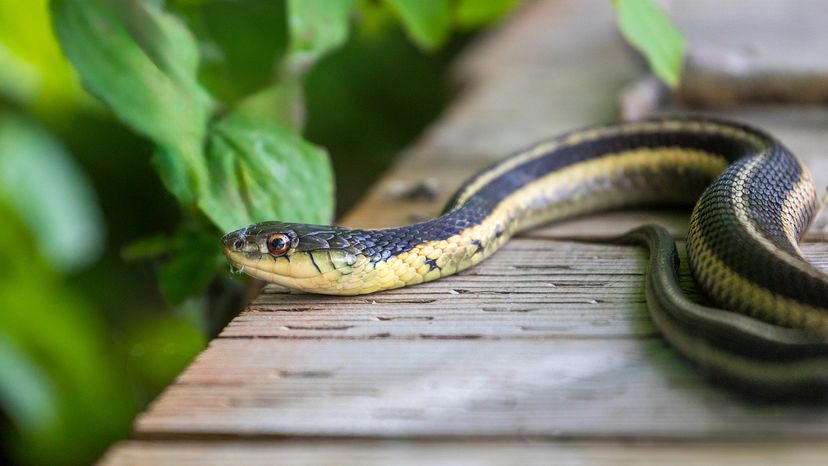
Ashley L Duffus / Getty Images
The garter snake is a good choice for beginners, particularly due to its manageable size, typically reaching 2 to 3 feet (0.6 to 0.9 meters) in length, and its active, curious personality.
This snake species is easily recognized by the distinctive stripes running along its body, which can vary in color depending on the specific type of garter snake. They are lively and love to explore their environment, making them an engaging pet.
One of the unique features of garter snakes is their varied diet, which sets them apart from other snake species. They can eat a mix of fish, worms and small amphibians, though they will also happily accept frozen-then-thawed mice. This flexibility makes feeding them easier and more diverse.
Known for being hardy and adaptable, garters are well-suited to a variety of habitats and are relatively easy to care for.
7. Kenyan Sand Boa (Eryx colubrinus)
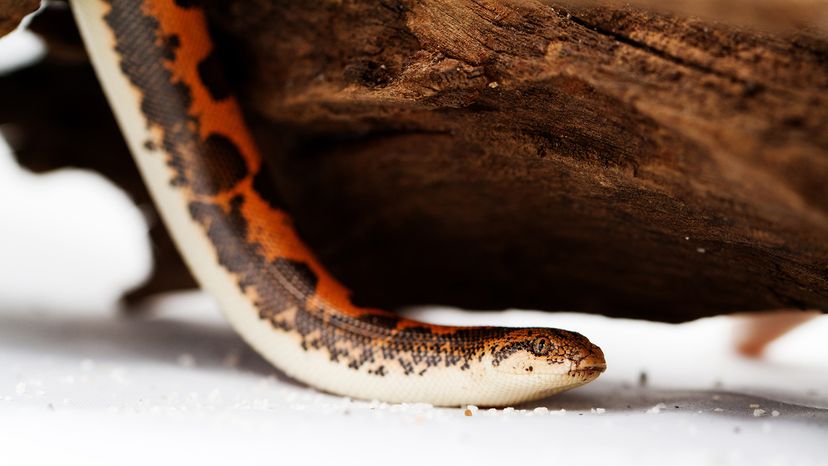
Nneirda / Shutterstock
The Kenyan sand boa is perfect for those who prefer a smaller burrowing snake. Typically reaching 1.5 to 2 feet (0.45 to 0.6 meters) in length, this boa is known for its thick, rounded body and striking orange and brown patterns. Their small size and manageable nature make them ideal for beginner snake owners.
As their name suggests, Kenyan sand boas love to burrow and spend much of their time hidden under the substrate, often in aspen bedding or sand. This burrowing behavior makes them a bit shy, but their docile temperament and gentle nature make them easy to handle.
They are also incredibly low-maintenance, thriving in a simple enclosure. Their diet consists of frozen-then-thawed mice, and they require relatively infrequent feeding due to their slower metabolism.
Despite their reclusive habits, these boas are great pets for beginners looking for a calm, easy-to-care-for snake that won’t outgrow their space.
8. Western Hognose Snake (Heterodon nasicus)
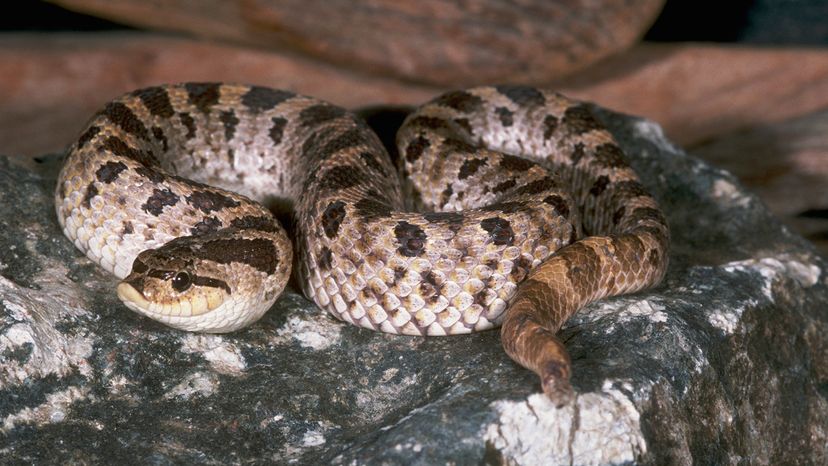
David A. Northcott / Getty Images
The western hognose snake is a small, quirky snake known for its distinctive upturned snout, which it uses to dig and burrow in the substrate. Reaching a length of 2 to 3 feet (0.6 to 0.9 meters), this snake’s manageable size and friendly temperament make it a great choice for beginners.
One of the most entertaining aspects of the western hognose is its dramatic defensive behavior. When threatened, it may puff up, hiss and even play dead, but don’t worry; it’s all for show, as they are harmless and nonvenomous.
Western hognoses thrive in enclosures that provide plenty of space for burrowing in materials like aspen shavings or coconut fiber. Their diet consists primarily of frozen-then-thawed rodents, and they are relatively low-maintenance pets.



